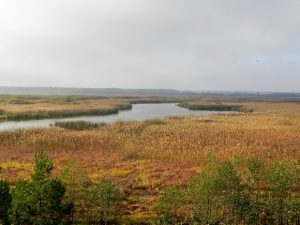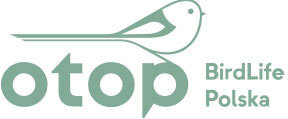The ray of hope raised for Sporava mire

Raniuszek – Ptak Jesieni 2011
22 października 2011
Wysyłka koszulek do obserwatorów MPPL
26 października 2011Long-awaited active vegetation management was finally launched in Sporava mire (Belarus) in October 2011. This protected area holds about 500 singing males of the aquatic warbler or 5% of the global population. As most of aquatic warbler breeding sites, Sporava mire suffers from successional overgrowing. The need of vegetation management was prioritized as essential in a management plan for Sporava mire to conserve its unique biodiversity.

Sporava mire before ratrac
Innovative and highly efficient caterpillar mowing device (ratrac) was specially adopted for working under mire conditions. All formal procedures are already behind, staff was hired and trained, first trial mowing already took place. There are plans to proceed biomass harvested within conservation activities at high nature value site into fuel briquettes. The income from sales of briquettes is expected to cover the costs of vegetation management making the whole cycle self-supporting. In addition, as biomass briquettes are based on the renewable raw material they are considered to be an alternative for peat briquettes. Biomass briquetting facility is being finalized at the moment and first briquettes are supposed to be produced before the end of 2012.
The effectiveness of conservation measures will be monitored basing on vegetation development, numbers and distribution of indicator bird species including aquatic warbler.
Vegetation management system is being introduced by APB-BirdLife Belarus within the project “Restoring Peatlands and applying Concepts for Sustainable Management in Belarus – Climate Change Mitigation with Economic and Biodiversity Benefits” financed by the Federal Ministry for the Environment, Nature Conservation and Nuclear Safety of Germany through the KfW Entwicklungsbank, and conducted by the Royal Society for the Protection of Birds (RSPB), the Michael Succow Foundation (MSF) and APB, and UNDP Belarus.
Uladzimir Malashevich<br>BirdLife/CMS International Aquatic<br>Warbler Conservation Officer<br> malashevich@ptushki.org

